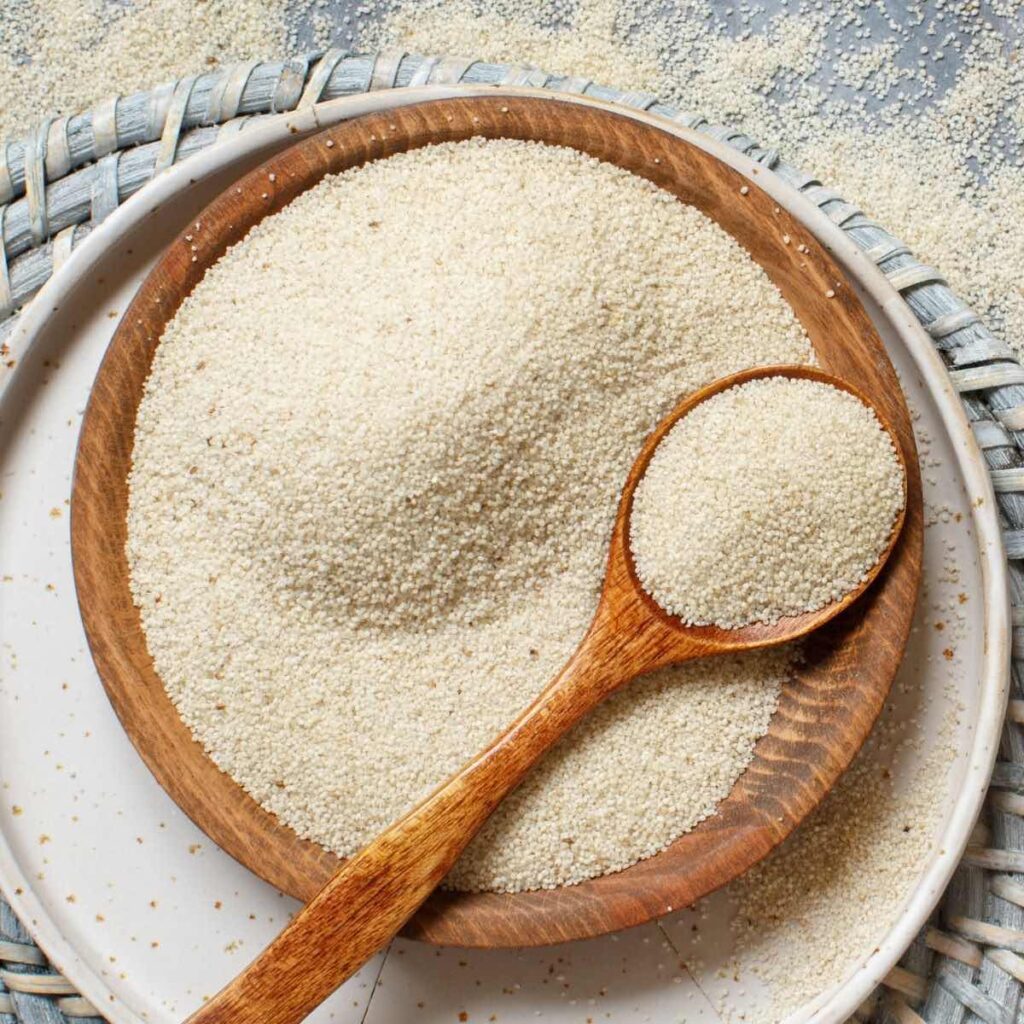Fonio (Digitaria exilis Stapf) is an ancient small grain millet that is native to West Africa. It is referred to as Nvoni and Ekpui by Chokosis and Konkomba people, respectively. Fonio is grown and harvested in Ghana. Ghana only cultivates the “white” Fonio. Fonio is mostly known in the northern territories of Ghana. However, today most young people do not know the crop, and only very old people can remember it being grown when they were young.
Fonio thrives in dry climates and poor soils. This is a grain with excellent quality, tiny seeds, fluffy couscous-like texture and has a delicious nutty flavour. Other names for it include acha, hungry rice, and petit mil. Within 6 to 8 weeks, fonio can be harvested safely without the need for fertilizers and without concern for pest infestation. This is significant for reducing costs for small-scale farmers and essential for guaranteeing food security, particularly during the post-harvest periods when food is scarce.
It is now grown as a staple, major complementary cereal or cash crop in parts of the West African Savannah. The United Nations Food and Agric Organization (FAO) suggests that Fonio has the highest calcium content of all grain. This may make it an excellent option for people who don’t eat dairy, including vegans or people who have lactose sensitivity.
It is frequently planted in rotation with rice, sorghum or millet. Fonio is harvested using age-old techniques; the plants are cut with a sickle or knife and bundled into sheaths for drying.
It takes a lot of work to prepare the grain since it must first be extracted from the dried plants by beating them, and then the grain must be dehulled in a mortar.
Aside from making headlines for being a robust crop, the crop has some remarkable health benefits. Fonio is known to be gluten-free, hence easy to digest and can be helpful for anyone suffering from stomach trouble or digestive issues.
Thiamine, Riboflavin, and Niacin, which are essential for cell growth, development, and function as well as energy production, are found in abundance in fonio. It is also low in sodium, fat, and cholesterol. Fonio promotes milk production during breastfeeding and aids in preventing blood clots after childbirth.
It is also proven to be good for diabetic patients, since the low GI and low sugar content of fonio helps to reduce fluctuations in blood glucose and insulin levels. The distinctive quality of fonio from other grains is its richness in essential amino acids. Fonio is also rich in calcium, magnesium, and zinc, which help strengthen hair and nails, and build strong bones and teeth.
The grain has good nutrition quality and attractive flavour. Fonio is very easy to prepare. When cooked it almost quadruples in size. The grain is used in a variety of recipes for making porridge, Jollof and Tuo-zaafi, and for malting for brewing beer.
The straw and chaff are fed to animals. It is also used to reinforce mud for building and as thatch for roofing. It can be cooked in just 3 minutes and used as an alternative to rice, couscous, quinoa, stews, soups, salads, porridge or as a side dish. Fonio grain can be milled into flour, which is often mixed with wheat flour for baking.
Although Fonio is not popular in the Ghanaian market, there are local companies with the goal of developing a market for fonio in the country and beyond. Reviving fonio will support rural smallholder farmers and offer a wider nutritious alternative to other grains in our diet.

